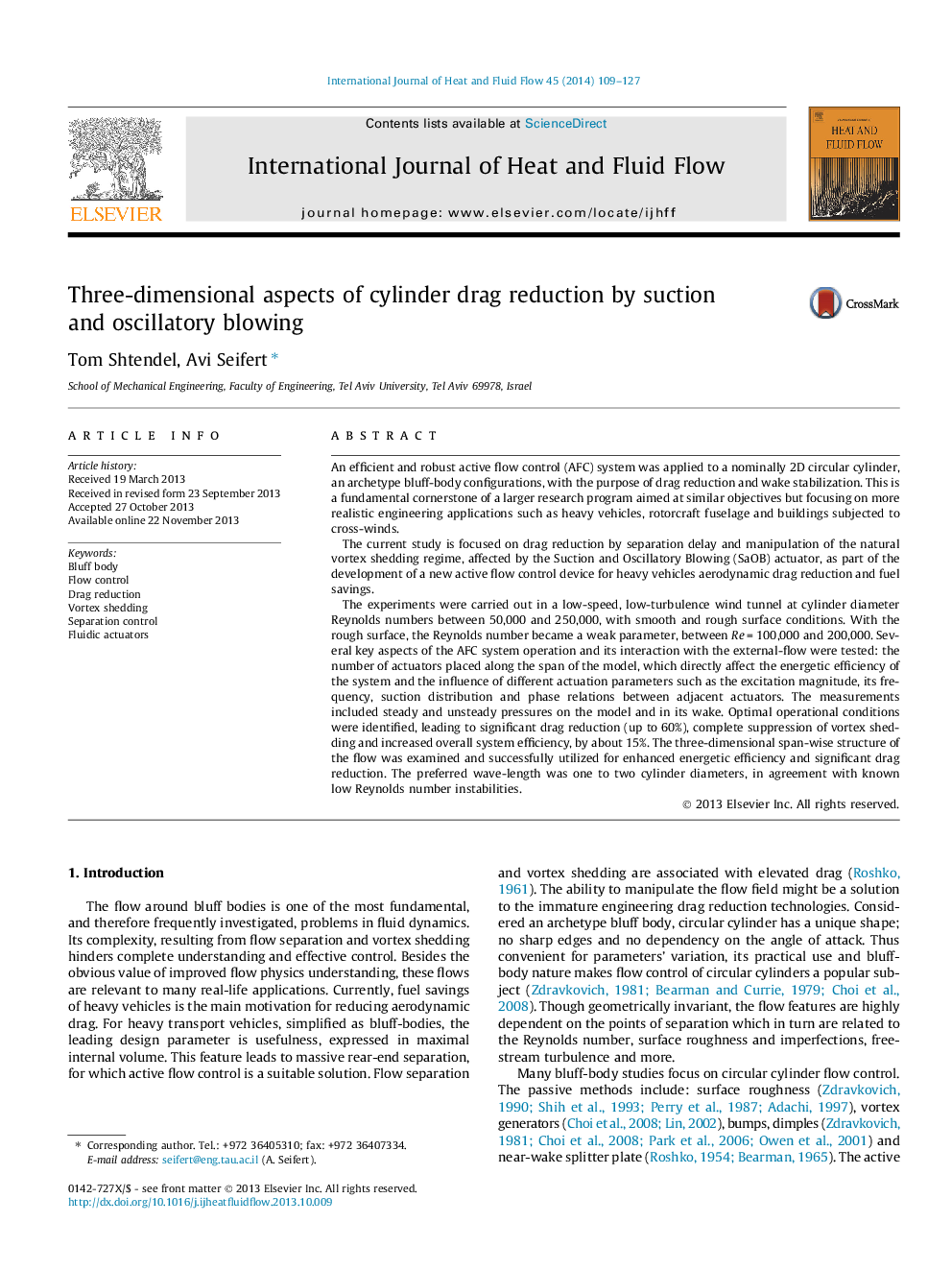| Article ID | Journal | Published Year | Pages | File Type |
|---|---|---|---|---|
| 655192 | International Journal of Heat and Fluid Flow | 2014 | 19 Pages |
Abstract
The experiments were carried out in a low-speed, low-turbulence wind tunnel at cylinder diameter Reynolds numbers between 50,000 and 250,000, with smooth and rough surface conditions. With the rough surface, the Reynolds number became a weak parameter, between Re = 100,000 and 200,000. Several key aspects of the AFC system operation and its interaction with the external-flow were tested: the number of actuators placed along the span of the model, which directly affect the energetic efficiency of the system and the influence of different actuation parameters such as the excitation magnitude, its frequency, suction distribution and phase relations between adjacent actuators. The measurements included steady and unsteady pressures on the model and in its wake. Optimal operational conditions were identified, leading to significant drag reduction (up to 60%), complete suppression of vortex shedding and increased overall system efficiency, by about 15%. The three-dimensional span-wise structure of the flow was examined and successfully utilized for enhanced energetic efficiency and significant drag reduction. The preferred wave-length was one to two cylinder diameters, in agreement with known low Reynolds number instabilities.
Related Topics
Physical Sciences and Engineering
Chemical Engineering
Fluid Flow and Transfer Processes
Authors
Tom Shtendel, Avi Seifert,
